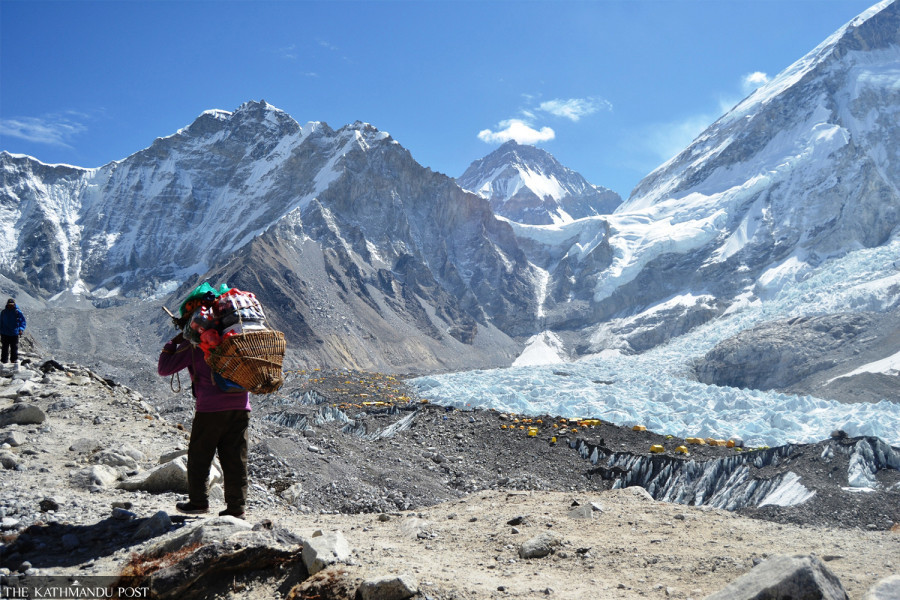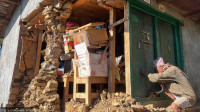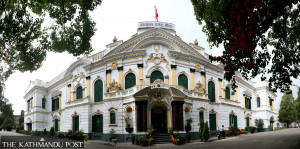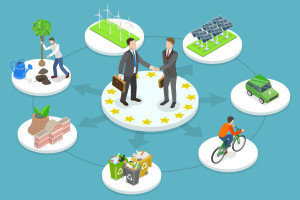Columns
Anthropocene in international relations
This perspective is essential for understanding South Asia’s changing political and climate situations.
Prasanta Kumar BK
As students of international relations, we were socialised into mainstream ideas, including theories ranging from realism to constructivism, political thought, geopolitics, geo-economics, various forms of power (soft, hard and smart), and the roles of state and non-state actors and so on. Currently, we have been reimagining our course content and recognising a significant academic movement toward incorporating the Anthropocene in international relations in South Asia.
Whenever a concept of the Anthropocene—sustainable development, climate change—arises, we must remember, as intellectuals and scholars engaged in particularly critical international relations, the necessity to broaden, deepen and pluralise its meaning. The discourse presents the need to design a curriculum that rethinks international relations, aiming to incorporate diverse viewpoints and experiences as valid forms of knowledge. International relations now includes the Anthropocene concept, known as the “Anthropocene Rapture”. It demands rewriting about the Earth in global geopolitics.
We can illustrate this idea as an exceedingly complex phenomenon that totalises the narrative of a planetary crisis. This narrative must be critically assessed, holding everyone equally responsible and accountable for both the causes and consequences. Each Anthropocene, including the South Asian Anthropocene, embodies a complex geography, characterised by its intricate history. Therefore, when reflecting on the realities of the Anthropocene, it is essential to examine it from the perspective of our subcontinent within broader regional contexts. Now, creating a Global Soul for the Global South is in our hands and requires further discussion. Moreover, it is essential to distinguish what constitutes Anthropocene information and Anthropocene knowledge.
In Gitanjali, Rabindranath Tagore states that the highest form of education is not merely about imparting information but knowledge about fostering a life in harmony with all of existence. Is there an international relationship within the context of the Anthropocene that allows us to view life in all its interconnected forms?
Simon Lewis, Professor of Global Change Science, asserts that we—this ‘we’ should indeed be enclosed within single quotation marks—have become a geological force in our own right. Human activities significantly alter Earth’s life-supporting infrastructures, a reality that will profoundly impact our philosophical, social, economic and political perspectives on our environment. As a result, this era is being considered a new geological epoch. Anthropocene as a concept was coined by the Dutch meteorologist Paul J Crutzen. It is crucial to emphasise this fact, as the idea originated in geology. This epoch is generally regarded as having begun two centuries ago, coinciding with James Watt’s invention of the steam engine in 1769. Therefore, we classify the Anthropocene as a geological epoch. Similarly, we should also acknowledge the Anthropocene as a social epoch, a social geological epoch and even a geological geopolitical epoch.
There are various critical Earth system trends, including carbon dioxide levels, methane emissions, ocean acidification, illegal marine fish capture, loss of tropical forests, deforestation, and desertification. Additionally, the gap in greenhouse gas emissions remains substantial. Significant evidence suggests that achieving 1.5 degrees Celsius is nearly impossible and unlikely to occur. Furthermore, if temperatures rise by more than 2 degrees Celsius, it is essential to remember that the polar regions are warming at almost twice the global average. We are experiencing various accelerations and transformations, as natural science and climate science indicate.
The Indian Ocean region features a chaotic stability map of the Indian monsoon. It is important to note that disturbances in the thermohaline circulation system in the Arctic and Southern Oceans could significantly impact the monsoons in South Asia. We can foresee the potential consequences of a monsoon failure. What will happen to the cryosphere? What changes can we expect at the three poles? The first pole includes the Arctic; the second is Antarctica; and the third is the Himalayas, which encompass Nepal. The melting of glaciers in high mountain ranges and polar regions will impact oceans and marine life, leading to rising sea levels. These changes will dramatically transform our lives. In a broader context, Nepal is not entirely a landlocked country. Despite its landlocked appearance, one must consider the coming and going of its trade: the ocean. Therefore, Nepal can be viewed as a maritime nation to a certain degree. Further, under the Law of the Sea Convention, it possesses rights associated with maritime transfer.
Environmental changes are poised to have significant geopolitical repercussions. We have observed the recent heated discussions surrounding geopolitics, particularly about US President Donald Trump’s interest in Greenland, and we are likely to stay informed about the geopolitical developments in the Arctic region. Although it appears far, it is not, as alterations occurring in the polar areas will significantly affect us here in South Asia. Geopolitical complexities and conflicts intertwine with environmental and climate changes, and the Arctic is no exception. Antarctica experiences similar effects. Although we may believe that the Covid-19 crisis is behind us, scientific evidence indicates that we could face another wave of deadly pandemics, including severe ‘zombie diseases’ linked to climate change and the thawing of permafrost in the Arctic. Climate change is affecting Arctic wildlife, such as polar bears, which are often referred to as Arctic refugees due to their displacement. James Lubbock, renowned for his work on Mother Gaia, predicts that billions of people will die, leaving only a few breeding pairs to survive in the Arctic.
Peter Prengaman argues that the Anthropocene, a new geological epoch, has begun. Many scholars frame Bangladesh as a climate change black hole. The situation has serious repercussions. Whether one agrees or not, our subcontinent is one of the planet’s most disaster-prone regions. Earthway does not recognise boundaries. The polluted air does not recognise borders between us. Diseases have profoundly impacted the establishment of boundaries and borders. In this critical moment, we are entering a global emergency. Thus, we can assert that Nepal lies between two rising powers and two big polluters.
We are transitioning from the natural science narratives of the Anthropocene to the domain of international relations. The era of the Anthropocene—the term we use—unfolds amid a climate of terror. Sir David King, a South African-born British chemist and head of the Climate Crisis Advisory Group, states that the situation is even more serious than the threat of terrorism. Likewise, Sir John Houghton, a Welsh atmospheric physicist, said it is a weapon of mass destruction.
The impact of global warming is such that we can describe it as a weapon of mass destruction. Thus, studying the Anthropocene in international relations and including it in university courses is essential for understanding and effectively dealing with South Asia’s changing political and climate situations.




 17.12°C Kathmandu
17.12°C Kathmandu















